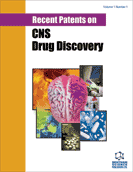Abstract
Cocaine dependence is characterized by compulsive drug seeking and high vulnerability to relapse. Overall, cocaine remains one of the most used illicit drugs in the world. Given the difficulty of achieving sustained recovery, pharmacotherapy of cocaine addiction remains one of the most important clinical challenges. Recent advances in neurobiology, brain imaging and clinical trials suggest that certain medications show promise in the treatment of cocaine addiction. The pharmacotherapeutic approaches for cocaine dependence include medications able to target specific subtypes of dopamine receptors, affect different neurotransmitter systems (i.e. noradrenergic, serotonergic, cholinergic, glutamatergic, GABAergic and opioidergic pathways), and modulate neurological processes. The systematic reviews concerning the pharmacological treatment of cocaine dependence appear to indicate controversial findings and inconclusive results. The aim of future studies should be to identify the effective medications matching the specific needs of patients with specific characteristics, abandoning the strategies extended to the entire population of cocaine dependent patients. In the present review we summarize the current pharmacotherapeutic approaches to the treatment of cocaine dependence with a focus on the new patents.
Keywords: Cocaine, dependence, promising medications treatments, NEUROBIOLOGICAL CORRELATES, neuroadaptive dysregulation, CRF neurotransmission, glutamate dysregulation, pre-synaptic dopamine, insomnia, methylphenidate, Topiramate
 13
13

